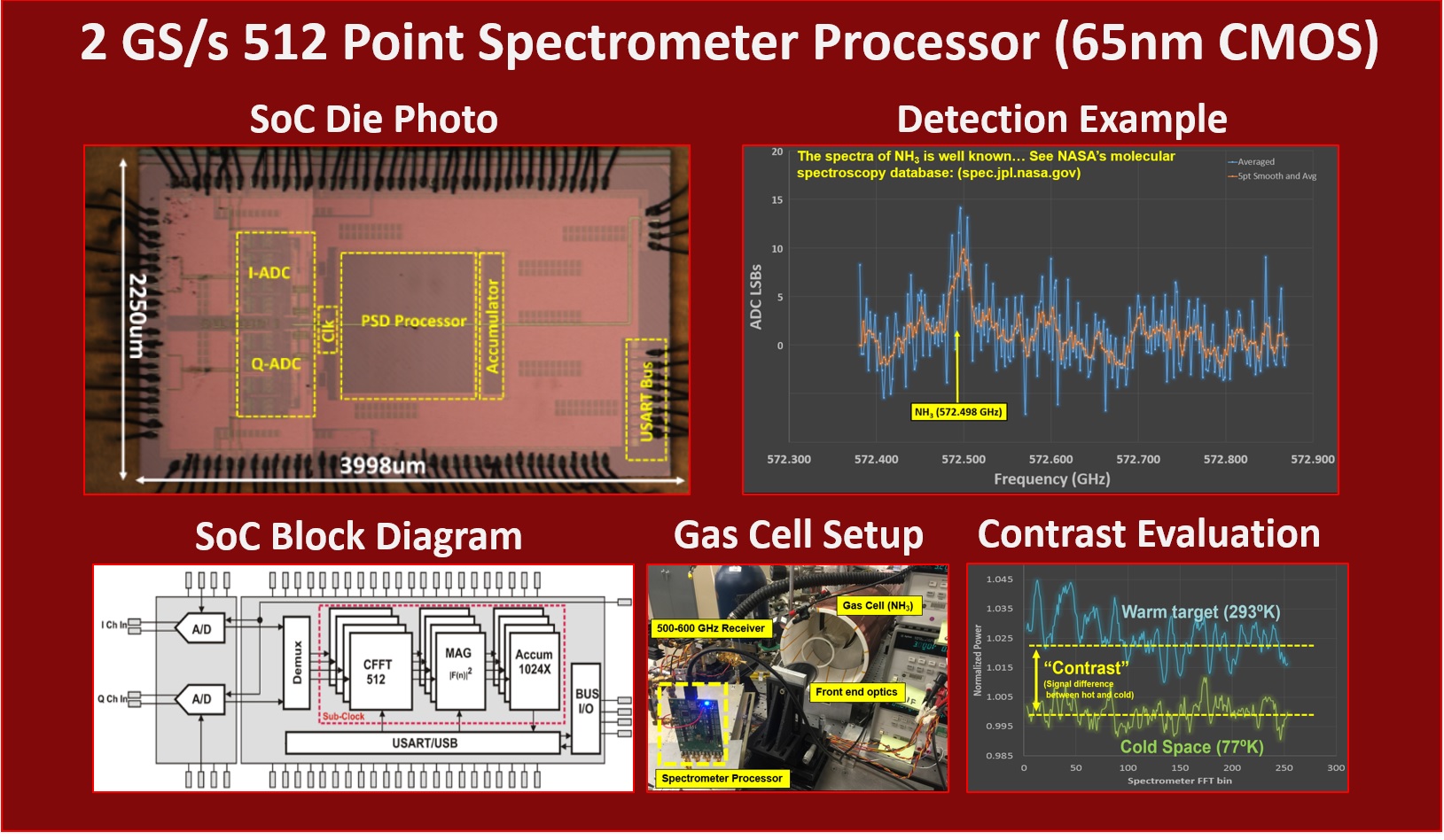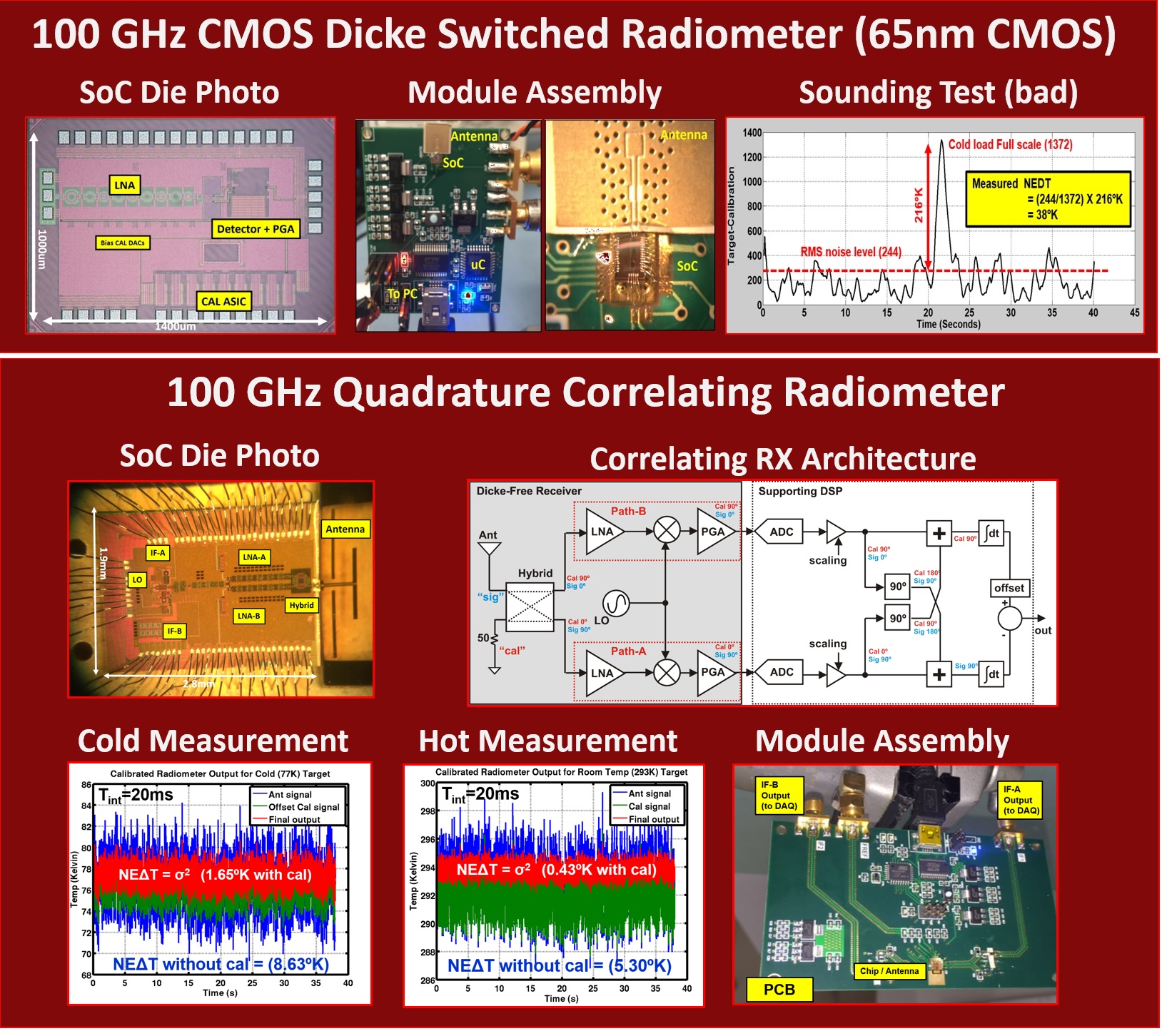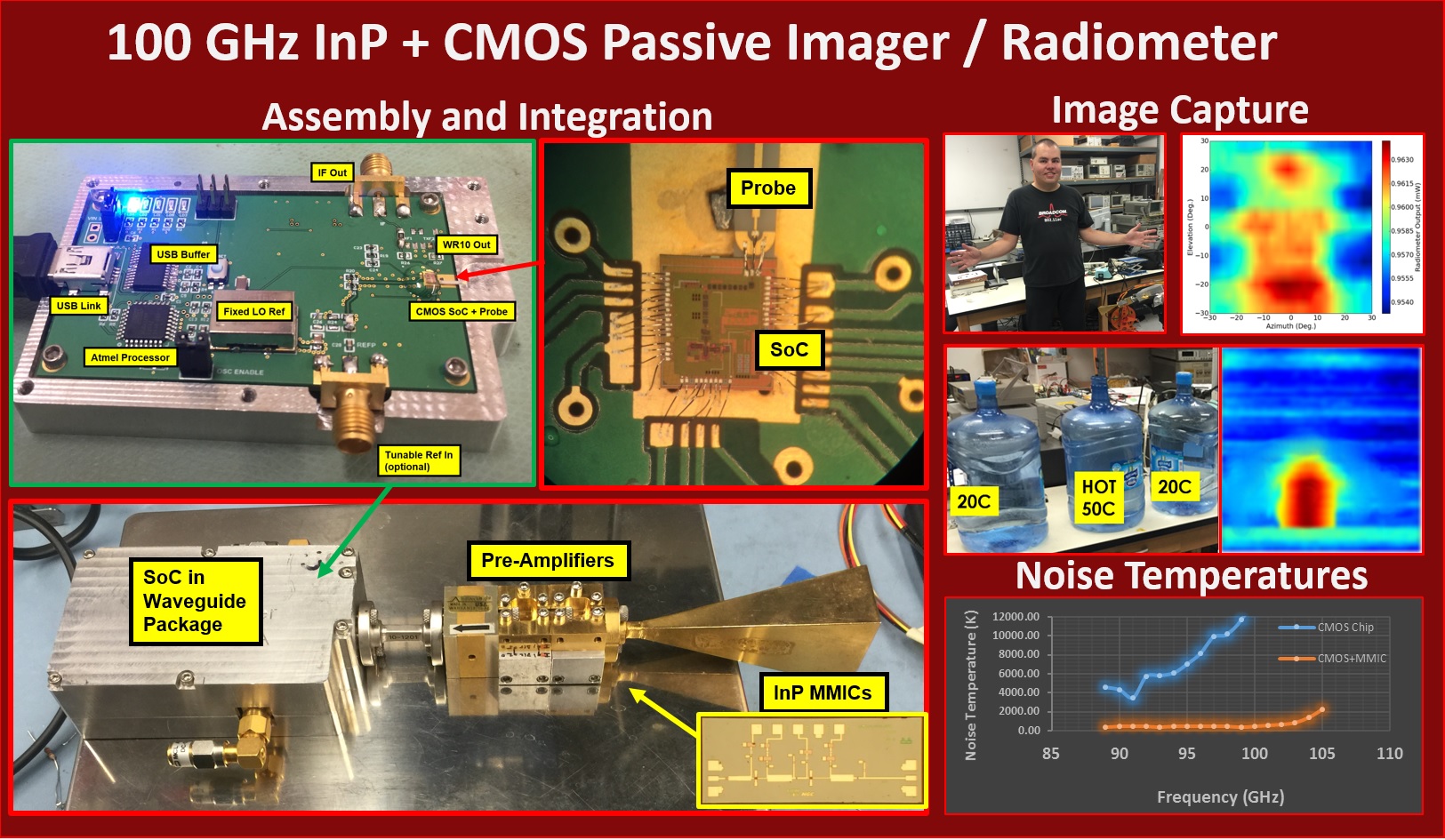mm-Wave and THz Spectroscopy:
Spectroscopy that uses mm-wave or THz signals to dectect spectral absorption lines either with illumination (active) or passively by capturing spectral emissions to identify unknown materials is one of the backbones of the space instruments built by my group at JPL. Many materials offer spectral features at frequencies from the low microwaves all the way up to the mid-IR. Some things to keep in mind however, are these spectroscopy techniques do not work at atmospheric pressures since all the lines become heavily pressure broadened (I think of it like dampening of the molecular motion) and renders molecular spectra undetectable. Therefore the idea of "seeing" materials just by remotely sensing or pointing something at something else (think star-trek tricorder), doesn't really make any physical sense. Also for passive spectroscopy a cool background is needed (like 77K Liquid N2 or similar) in order to see anything so the target isn't washed out by background energy.
Spectrometers are extremely important for Earth and planetary science as well as astrophysics. mmW/THz spectrometers enable investigations of atmospheric compositions and processes, surface science, and even mapping of key molecules in distant galaxies. You should hop over to the JPL molecular spectroscopy group's exciting website if you want to learn more about how NASA and JPL uses spectroscopy for its scientific investigations.
At JPL we have some of the best mm-wave / THz hardware ever demonstrated which CMOS simply cannot compete against (think 1500K noise temp at 500 GHz) for sensitivity, so instead, my research effort is focused on the supporting signal processing and DSP for these instruments. At UCLA we have developed several spectrometer processors, which have been coupled to THz instruments and tested with gas cells (where sample gasses are introduced at near vacuum pressures to simulate space environments). Recent demonstrations include a 512 Channel / 2 GS/s spectral processor to support a 600 GHz JPL planetary instrument led by Goutam Chattopadhyay.

mm-Wave and THz Radiometry:
A radiometer is very similar to passive spectrometer except that the frequency domain is not computed and instead only the total in-band power is provided by instrument. Unlike spectrometers which can detect a wide range of chemicals, radiometer instruments are usually designed to go after only 1 or 2 key materials. For Earth science radiometers are popular at 183 GHz and 118 GHz to sound the H2O lines, aiding in the study of cloud formation, extreme weather and many many other atmospheric processes. I have several funded projects in this area starting this year (2015) so expect to see continuous updates here every few months (if everything works out...). Below is the first test of our proof of concept Dicke-radiometer, which is very noisy.
Also shown is a correlating radiometer also at W-band which had much better results. This is a cool idea borrowed from the astronomy folks but with a digital/DSP implementation. The receiver looks at a resistor on the quadrature phase, and input signal on the 0 degree phase to perform the calibration and observation at the same time, avoiding paying the duty cycle penalties of the dicke switch. The hot cold tests shown were done with liquid N2 at 77K.
Here is a demo video on the InP+CMOS radiometer / passive imager below (passive imager). Basically I put my hand in the beam and see the contrast between the 20ºC room and my maybe 35ºC hand. If you have such a large contrast, you're doing it right. Otherwise you probably don't have a radiometer, just a receiver that isn't sensitive enough. As I suggested in IMS2016, this is the only accurate way to measure NEdT as the radiometer equation Tsys X sqrt (1/Tb + [dg/G]^2) has many inaccurate assumptions about gain variation and cancellation from dicke switches and such. I've spent lots of time on both NEdT estimates, and directly measuring the contrast with hot and cold things is really the only credible way to come up with the real numbers.


|